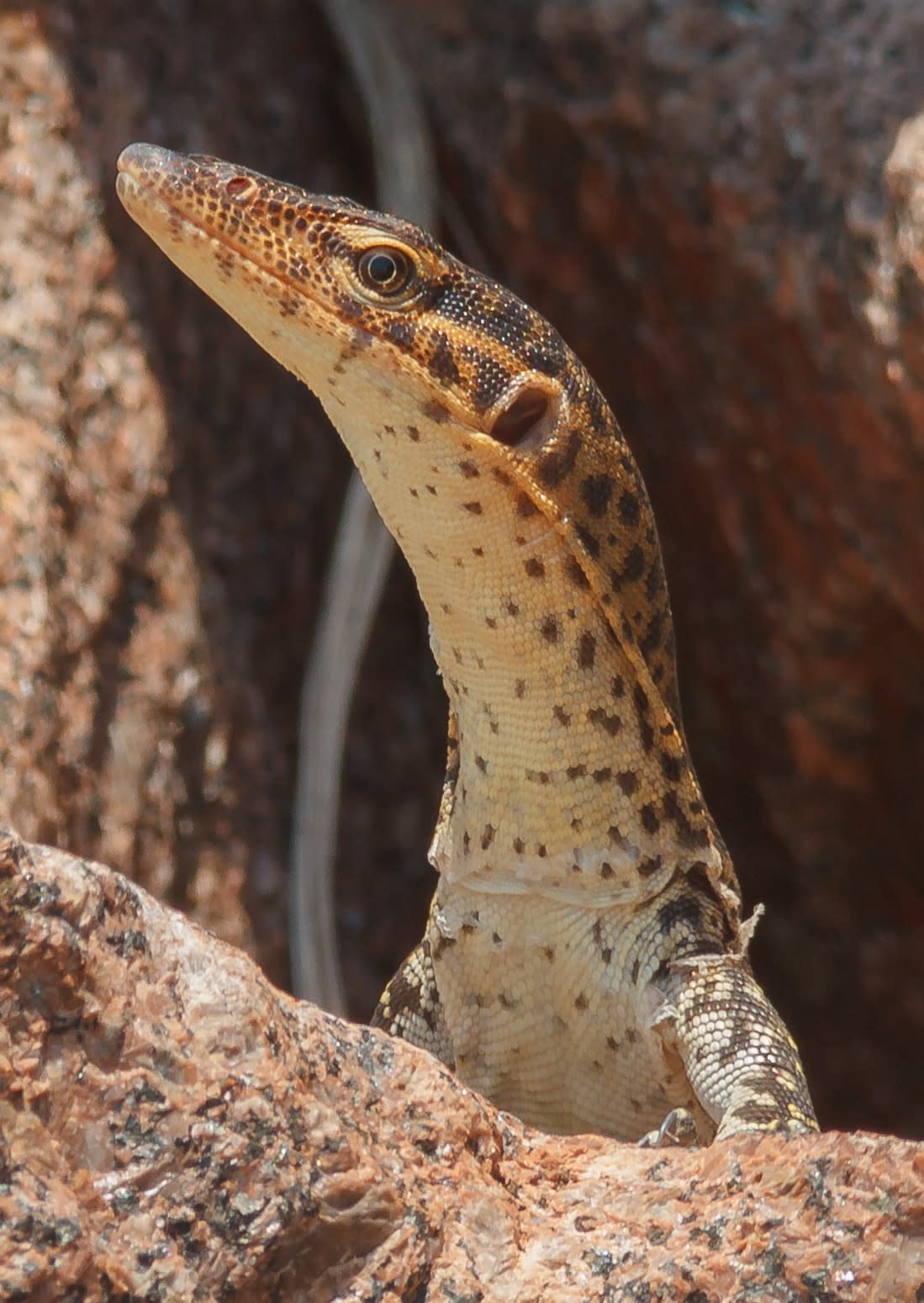Monash scientist Professor David Chapple is an experienced reptile counter, tracking species in Australia, New Zealand and globally in order to understand rates of extinction, reasons for extinction, and new pressures on extinction.
The problem in his field has been that reptiles have been of lesser interest in ongoing scientific counts, with more “visible” species such as birds, mammals (possums, mice) and amphibians (frogs) being given thorough extinction-risk assessments for more than 10 years.
That decade of data adds up to an extinction crisis. In the category of “tetrapods” (four-legged animals such as amphibians, birds and mammals) more than 40% of amphibians, 25% of mammals and 13% of birds are threatened with extinction globally.
Reptiles are tetrapods, too, but haven’t been assessed in the same way. For that reason, conservation science has used an alternative tool, the International Union for Conservation of Nature (IUCN) Red List, to find out more about reptiles – the turtles, lizards, skinks, and snakes.
Australia holds about 10% of the world’s reptile species, while New Zealand has one of the highest rates of threatened reptiles in the world at 74%.
The sheer numbers are huge; there are about 7000 species of frog on the planet, and 11,000 species of reptile.
That in turn has now led to a landmark 900-scientist global assessment of reptiles, beginning in 2004 and published in Nature.
The bad news is that 21% are threatened.
Those figures represent 15.6 billion years of phylogenetic diversity, which measures “branch length” in the Tree of Life.
The good news, according to Professor Chapple, is more knowledge and better conservation.
“It's the first time we've had a global assessment for reptiles, and also it was the first time in 25 years we’d had a national assessment in Australia of reptiles. It has massively updated our knowledge of the conservation status of reptiles in Australia and in the world.
“As a colleague said recently, prior to this study, reptiles basically weren't in the conversation, they weren't at the table. When a lot of these conservation decisions were being made they weren’t included, but now they've earned their place at the table and they can be considered in conservation initiatives.
“We just know so little about them. The work continues, and in the next 10 years we’ll reassess all the species that we’ve already assessed and have a look to see how things are changing over time.”

Raising the red flag
The Guardian reported on the Nature paper as it was released – and raised the threat of disaster for ecosystems and biodiversity if reptiles vanish.
Australia holds about 10% of the world’s reptile species, while New Zealand has one of the highest rates of threatened reptiles in the world at 74%.
The Nature study points out the high toll on reptiles of habitat loss and being eaten by invasive predators such as cats and foxes. Climate change is also an emerging spectre – reptiles often live in geographically small micro-climates, which will change.
The Nature assessment shows a doubling in the number of threatened reptile species in Australia in the past 25 years, and the first recorded extinction of a Christmas Island forest skink, the Emoia nativitatis.
Two species became “Extinct in the Wild”, which means they’re no longer in natural habitat – the blue-tailed skink (Cryptoblepharus egeriae) and Lister’s gecko, Lepidodactylus listeri).
Read more: Hundreds of Australian lizard species are barely known to science. Many may face extinction
In 1993, there were 32 threatened species (4.3% of species described at the time). In 2017, this had increased to 68 threatened species (7.3%).
The curious Fassifern blind snake of southeast Queensland is listed for the first time as critically endangered. One of these worm-like snakes was assessed in 1992, but none have been seen since.
“There’s about four or five other species that we’re aware of at the moment that haven't been seen for 30 or 40 years, at least,” Professor Chapple says. “We hold grave fears about whether they’re actually still with us or whether they're all already extinct.
“But they haven’t been officially declared extinct yet – the grassland earless dragon in Victoria, and there’s a few skink species from North Queensland that haven't been seen for a while.”

Habitat and bushfires in focus
Professor Chapple has been working on the IUCN assessments since 2009, when he joined Monash. He currently heads the Evolutionary Ecology of Environmental Change Laboratory in the School of Biological Sciences.
In 2017, he facilitated one of the Australian workshops – of about 30 scientists – for the assessments of thousands of species of Australian lizards and snakes. The workshops were at the University of Western Australia and the ecologically-significant Jock Marshall Reserve, near Monash’s Clayton campus.
He’s now involved in the next decade’s assessment, but also in a closer look at the link between reptile habitat and bushfires in southeastern Australia.
“What we now know is more about threatening processes for reptiles. The key threats in Australia are habitat loss, degradation, invasive species, climate change, and fire.
“Fire itself is a major issue,” Professor Chapple says. “The assessments that we did as part of this project were done prior to the 2019 and 2020 bushfires.”
The upside for some reptiles
The long study has also shown that while some reptiles are threatened, others have benefited from the conservation efforts put into other animals such as birds and mammals.
“I was surprised by the degree to which mammals, birds and amphibians, collectively, can serve as surrogates to reptiles,” said Dr Bruce Young, co-leader of the study and Chief Zoologist and Senior Conservation Scientist at NatureServe. “This is good news, because the extensive efforts to protect better-known animals have also likely contributed to protecting many reptiles. Habitat protection is essential to buffer reptiles, as well as other vertebrates, from threats such as agricultural activities and urban development.”
Professor Chapple says this all helps the reptiles, even though they’ve been overlooked before.
“One of the things we focus on in the study is how different are the needs of reptiles in terms of the needs of amphibians, birds, and mammals. And we found some differences, but a lot of commonality – so now when we’re planning, we can be a little bit more holistic and be looking at all terrestrial vertebrate groups rather than just birds and mammals, or frogs.
“We can then have conservation initiatives that help more species.”





